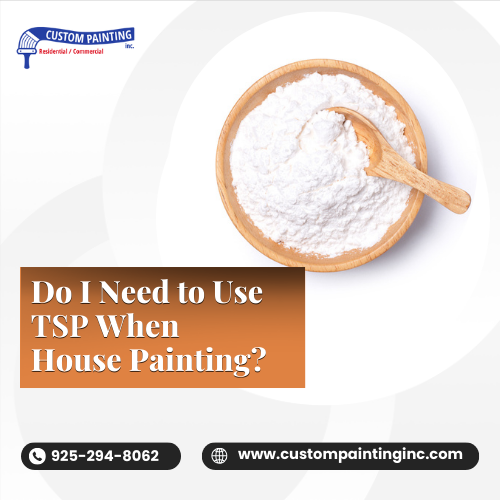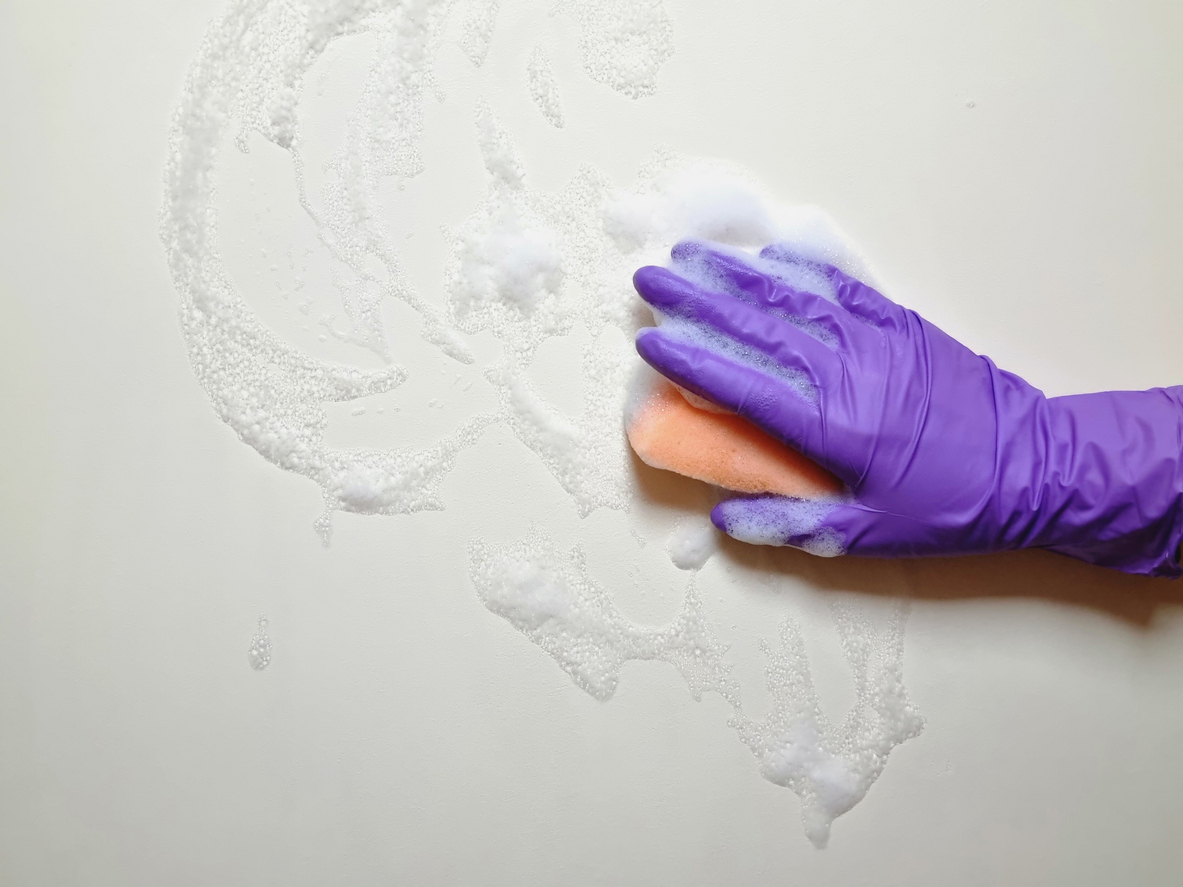Are you considering a fresh coat of paint for your home? Before you dip your brush into that vibrant new color, there’s an important step you might not want to overlook: preparing your walls. One effective way to ensure your paint adheres well and looks its best is by using Trisodium Phosphate, or TSP. This guide will help you understand when and why to use TSP, how to apply it properly, and the safety measures you should follow, simplifying your painting preparation process.
What is TSP?
Trisodium Phosphate (TSP) is a powerful cleaning agent widely recognized for its effectiveness in heavy-duty cleaning and surface preparation tasks in house painting. As a strong alkaline chemical, TSP is excellent at cutting through grease, removing mildew, and stripping away grime, making it an ideal choice for preparing your walls before painting. Not only does it cleanse, but TSP also slightly etches the surface, enhancing paint adhesion and ensuring that your new coat of paint applies smoothly and lasts longer.
Given its potency, TSP is especially useful in scenarios where walls are coated with excessive soot, kitchen grease, or any residue that might interfere with the quality of your paint job.
When Should You Use TSP?
Deciding whether to use Trisodium Phosphate (TSP) before painting your home depends largely on the condition of your walls. Here are a few scenarios where using TSP can be particularly beneficial:
Recommended scenarios for using TSP:
- Extremely Dirty Walls: If your walls are marked by years of dirt accumulation, using TSP can effectively break down and remove this buildup.
- Greasy Surfaces: In areas like kitchens, where grease and cooking residues are common, TSP can cut through these layers that typical cleaners might leave behind.
- Mildew-Prone Areas: For bathrooms or other damp areas of your home that may have mildew or mold, TSP not only cleans but also helps to remove spores that could affect paint adherence.
- Before Repainting Over High-Gloss Paints: When you’re planning to repaint surfaces that were previously painted with high-gloss or semi-gloss paints, TSP can help to degloss the surface to improve the adhesion of the new paint.
Situations where TSP may not be necessary:
- New Construction: New drywall typically only requires a basic cleaning, as there are no deep-set stains or grease to address.
- Lightly Soiled Walls: A less aggressive cleaning agent or simple soap and water might suffice for walls that are merely dusty or have light fingerprints.
- Environmental Concerns: Given that TSP can be harsh on the environment, you might opt for a phosphate-free alternative if your walls do not require heavy-duty cleaning. Such alternatives are safer for the environment and often adequate for less challenging cleaning tasks.
By assessing the specific needs of your painting project, you can make an informed decision on whether TSP is the right choice for your preparation process. Proper use ensures that your painting surface is ideal for achieving a professional-quality finish.
How to Properly Use TSP
Using Trisodium Phosphate (TSP) correctly ensures that your walls are optimally prepared for a new coat of paint. Follow this step-by-step guide to mix, apply, and rinse TSP safely and effectively:
1. Preparation
Before starting, equip yourself with safety gear, including gloves, goggles, and long-sleeved clothing to protect your skin and eyes from the strong chemicals. Use drop cloths and painter’s tape to protect floors, furniture, and fixtures from splashes.
2. Mixing
Mix the TSP with warm water according to the manufacturer’s instructions. Typically, you’ll use about ¼ cup of TSP per gallon of water for general cleaning tasks, but this may vary based on the level of soiling. Ensure the TSP is completely dissolved in the water to form an effective solution.
3. Application
Apply the TSP solution liberally using a sponge or mop. For walls, start from the bottom and work your way up to prevent streaks.
For heavily soiled areas, use a scrub brush to work the solution into the surface, ensuring you remove all residues.
4. Rinsing
After cleaning, rinse the walls thoroughly with clean water to remove any residual TSP solution. This is critical as leftover residues can affect paint adhesion. In cases of severe soiling, a second application may be required. Always rinse between applications.
Tips for Effective Use:
- Don’t let the TSP solution dry on the walls. Work in manageable sections and rinse each area before moving on to the next.
- Work in a well-ventilated area or use fans to circulate air and reduce fume inhalation.
- Always do a patch test in an inconspicuous area before applying TSP over a large area to check for any adverse effects on the surface.
Safety Precautions When Using TSP
Trisodium Phosphate (TSP) is a highly effective cleaning agent, but its strength means it can also pose risks if not handled properly. Here are key safety precautions to keep in mind when using TSP:
1. Wear personal protective equipment (PPE)
Always wear rubber or latex gloves to protect your skin from the caustic nature of TSP. Use safety goggles to prevent splashes from reaching your eyes. Consider wearing a mask or respirator in enclosed spaces to avoid inhaling fumes.
2. Ensure proper ventilation
Keep windows open and use fans to ensure good air circulation in the area where you are using TSP. This helps to dissipate fumes and reduces the risk of respiratory irritation.
3. Handle it safely
When mixing TSP with water, add TSP to the water and not vice versa to reduce the risk of chemical reactions or splashes. Ensure that the solution does not come into contact with unprotected skin or eyes. If splashes occur, rinse immediately with plenty of water.
4. Dispose properly
Dispose of any leftover TSP solution according to local regulations. Avoid pouring it down domestic drains where it can cause environmental harm. Cover plants and grass to prevent exposure to TSP, which can damage or kill vegetation.
5. Protect other surfaces and items
Remove or cover all items that you do not want to be exposed to TSP. Use drop cloths and painter’s tape to protect flooring and fixtures. After using TSP, clean all tools and containers with water and store any unused TSP securely out of reach of children and pets.
Conclusion
Preparing your home for painting is critical to achieving a flawless finish. Trisodium Phosphate (TSP) has proven invaluable in this preparation process, effectively cleaning and degreasing walls to ensure the best possible adhesion for your new paint. While the use of TSP can seem daunting due to its potent nature, proper application and adherence to safety guidelines can make it a practical choice for many homeowners.
But if you’re concerned about handling preparations and painting on your own, let Custom Painting Inc. take the hassle out of your home improvement project. Our professional team is equipped with the expertise and tools to prepare your home efficiently, using TSP where necessary and applying high-quality paint for a stunning finish. Contact Custom Painting Inc. today through our online form or give us a call at 925-866-9610 to schedule a consultation and move one step closer to the home of your dreams!



